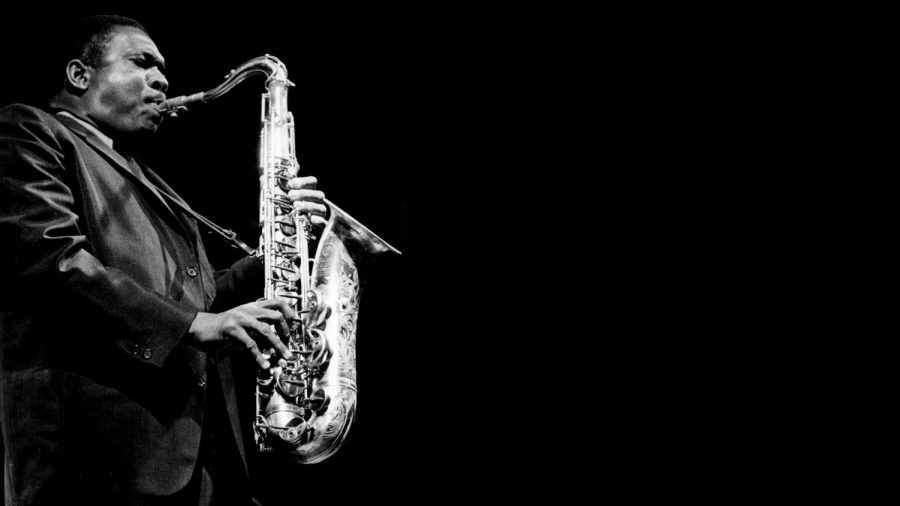From Jazz to Jay-Z
The Impact of African-Americans on Music
February 26, 2018
How did the American musical sound start? It started with African Americans like Robert Johnson and the jazz greats creating a unique sound that morphed from gospel and blues to jazz to rhythm and blues to funk, rock and roll, and finally hip hop. Let’s explore these genres, and their crucial African American artists who shaped these genres to celebrate Black History Month.
When African Americans came to this country through slavery, they brought with them a unique culture and genre of music. African Americans brought with them unique instruments– percussion, assorted wind instruments, and stringed instruments such as the banjo. Combining these instruments and the sentiment behind the struggles and oppression of Africans brought to America was pivotal to the formation of the up-and-coming genres of blues and jazz.
The blues and jazz originated in the late 19th century and start of the 20th century in southern American communities. The blues came about from the work songs and chants of the working, struggling African American and was typically played slowed down and quite melancholic. This genre was distinct because of its often 12-bar chord progression and the bent or flattened notes played on the guitar.
One man who pioneered this genre was the legendary quasi-folk legend Robert Johnson. His mere 29 recordings of the late 1930s were pioneering and have been cited as a source of inspiration by many of the great rock musicians– the Rolling Stones, Jimi Hendrix, Eric Clapton/Cream, and many more. Since little was known of Robert Johnson, it is rumored that he sold his soul to the Devil at a crossroads of Mississippi highways to achieve his success and be dubbed “The Master of the Blues.”
Jazz began around the same time. Similar to the blues, jazz spread up the Mississippi, throughout the south and up to the north. The first jazz record was made around 1917, when the Original Dixieland Jazz Band recorded the first jazz album, Livery Stable Blues. Jazz has always been distinguished by the amalgamation of African American music and European music and the usage of syncopated rhythms, improvisation, blues foundations, and the “swung” eighth note. Jazz greats include the inimitable Louis Armstrong, Charles Mingus, John Coltrane, Herbie Hancock, Miles Davis, Duke Ellington, Dizzy Gillespie, Ella Fitzgerald, Count Basie, the list just goes on and on.
Out of jazz came the great era of rhythm and blues or simply, R&B. After World War II, R&B developed from jazz and blues. It is characterized by its strong, upbeat rhythms and simple melodies. R&B bands and artists typically used more guitar, a piano, a bass, drums, background vocalists, and a saxophone or two. This instrumentation foreshadows to the emergence of rock and roll. R&B greats include the gorgeous, angelic, wailing Aretha Franklin, “Brother Ray,” “The Genius” Ray Charles, who pioneered soul music, James Brown, “The Godfather of Soul,” child prodigy Stevie Wonder, Etta James, and so many more. R&B served as the segue from jazz and blues to soul and rock & roll
Next up is rock & roll. I will always defend Chuck Berry as the inventor of rock n roll, being the first to put the pieces of rock & roll — a heavy beat, and simple repetitive melodies — together. Elvis may be “The King,” but Chuck Berry was first. Rock & roll was crucial in defining culture of the 60s and 70s because it was the catalyst to the Civil Rights Movement– both African American and white American teens immersed themselves in the rock & roll movement. Rock was defined by using typically two guitars, vocals, and a drummer and for its verse chorus form. Early rock greats include Chuck Berry, Bo Diddley and, later in that same tradition, Jimi Hendrix– one of the most highly regarded, incendiary guitarists, and musicians of all time.
We have the American recording company Motown to thank for the rock and soul of the 60s. Motown recorded all the greats, from Michael Jackson, Stevie Wonder, and the Temptations to Marvin Gaye and Bruno Mars. They were pivotal in the evolution of American music and helped define and capture American culture and current events through the artists they recorded at the time. Marvin Gaye’s concept album What’s Going On is still ranked the sixth greatest album of all time, according to Rolling Stone magazine. Released in 1971, this eloquent record is told from the perspective of a black Vietnam veteran who comes home to see that America is still plagued by racial injustice and hatred. Some of the best American music is about racial injustice and the systemic oppression of the African American community.
Finally, we arrive at the most recent musical form that originated from African Americans–hip hop and rap. Hip hop originated in the Bronx in the late 70s. Jamaican immigrant DJ Kool Herc is credited with the invention of this genre that is characterized by the rapid delivery of highly complex, rhythmic lyrics, backed by DJing, producing, and sampling. The greats of hip hop include Public Enemy, the Notorious B.I.G., Tupac Shakur, Outkast, JZ, Run DMC, and N.W.A.. The controversial Public Enemy and N.W.A. were crucial in defining the hip hop movement and carrying on the African tradition in America music. They used their own horrendous experiences with racism and police brutality in Los Angeles to write revolutionary songs and lyrics that I cannot quote in a school newspaper.
The best way to tie together this chronological piece that celebrates and honors African Americans in our music and culture is by discussing Quincy Jones and his 1989 hit album, Back on the Block. Words cannot describe the genius and talent in this studio album– it is the apex and culmination of talent from legendary, influential artists from the 20th century. This album included Ella Fitzgerald, Miles Davis, Joe Zawinul, Ice-T, Big Daddy Kane, Sarah Vaughan, Dizzy Gillespie, George Benson, Luther Vandross, Dionne Warwick, Barry White, Chaka Khan, Take 6, Bobby McFerrin, Al Jarreau, Al B. Sure!, James Ingram, El DeBarge, Ray Charles and Tevin Campbell. The album won a Grammy for Best Album of the Year and is a remarkable, historical fusion of the major genres of music– rock, jazz, soul, rap, blues, funk, R&B, any major genre you can imagine.
I find it to be ironic and plain stupid how racist and full of prejudice certain Americans can be. We should not be seeking differences based on skin color, race ethnicity, income, or social status. We should be celebrating this great country that is the capital and fusion of culture and music in the entire world. Music is something we all love, and it should be used to break down racial barriers. We should be proud of our music and country, from jazz to Jay-Z.












